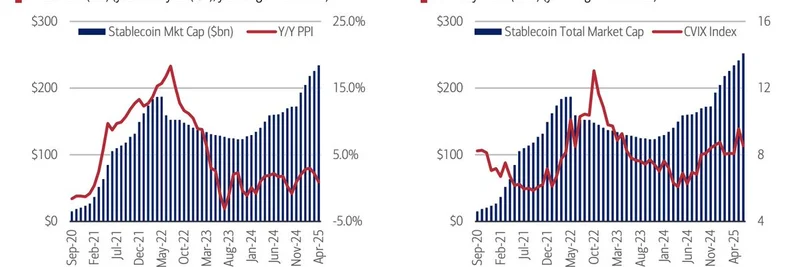In the fast-paced world of crypto, stablecoins have become the unsung heroes, providing a steady anchor amid the chaos of market swings. Recently, Patrick Scott, better known as Dynamo DeFi on X, shared a compelling snippet from Bank of America's latest report on stablecoins. His tweet highlights two key charts that show how stablecoin adoption has skyrocketed in response to global economic pressures. As someone who's been knee-deep in crypto analysis, I see this as a game-changer, especially for meme token enthusiasts who rely on stablecoins for trading and liquidity.
Stablecoins are essentially digital dollars (or other fiat currencies) on the blockchain—think USDT or USDC, pegged 1:1 to the real thing and backed by reserves like cash or treasuries. They're designed to hold steady value, unlike volatile assets like Bitcoin or your favorite meme coin. The Bank of America Institute report, titled "Crypto goes steady: Stablecoins" and released on October 30, 2025, dives deep into this, noting their roles in payments, as a store of value, and even lending through DeFi protocols.
Stablecoins as a Shield Against Inflation
One of the standout points from the report is how stablecoins have grown hand-in-hand with inflation spikes. Exhibit 4 in the report plots the total stablecoin market cap against the Producer Price Index (PPI) year-over-year changes. As inflation heated up—peaking around 25% in some periods—the stablecoin market cap ballooned from nearly zero in September 2020 to over $300 billion by April 2025.
This makes sense: when prices are soaring, people flock to USD-pegged stablecoins to preserve their purchasing power, especially in regions hit hard by inflation. For meme token traders, this is crucial because stablecoins often serve as the base pair for buying and selling memes on decentralized exchanges like Uniswap or Raydium. More stablecoin liquidity means easier entry and exit points, even when traditional markets are in turmoil.
Riding Out Currency Volatility
Exhibit 5 takes it a step further, linking stablecoin expansion to currency volatility via the Currency Volatility Index (CVIX). As global currencies wobbled—think emerging markets or geopolitical tensions—the stablecoin market cap climbed steadily, correlating with CVIX levels jumping from 4 to 16 over the same timeframe.
In simple terms, when local currencies are unpredictable, stablecoins offer a digital safe haven. The report points out that daily transaction volumes hit about $30 billion as of July 2025, still a tiny slice (less than 1%) of global money flows, but the growth trajectory is impressive. Projections for cross-border payments? They're expected to swell to $317.9 trillion by 2032, up 63% from 2024, with stablecoins potentially playing a bigger role.
Regulatory Boost from the GENIUS Act
The report also touches on the GENIUS Act, signed into law in July 2025, which sets up the first U.S. federal framework for stablecoins. This includes requirements for full reserve backing, anti-money laundering checks, and split oversight between federal and state levels. It's a big win for legitimacy, reducing risks like de-pegging (when a stablecoin loses its 1:1 peg) and making them more appealing for mainstream adoption.
For the meme token space, this stability is a double-edged sword. On one hand, regulated stablecoins could bring in more institutional money, boosting liquidity for meme projects. On the other, it might tame some of the wild west vibes that fuel meme hype. Still, with challenges like high gas fees and irreversible transactions, clearer rules could help scale DeFi platforms where memes thrive.
Implications for Meme Token Traders
At Meme Insider, we're all about decoding how broader crypto trends affect the meme ecosystem. This BofA report underscores that stablecoins aren't just boring sidekicks—they're the backbone enabling meme token volatility plays. As inflation and currency swings persist, expect more inflows into stablecoins, which could indirectly pump meme markets by providing cheap, fast on-ramps.
If you're trading memes, keep an eye on stablecoin metrics via tools like DefiLlama. And remember, while stablecoins offer relative safety, always DYOR—do your own research—before diving in. What's your take on this? Has stablecoin growth helped your meme strategies? Drop a comment below!



